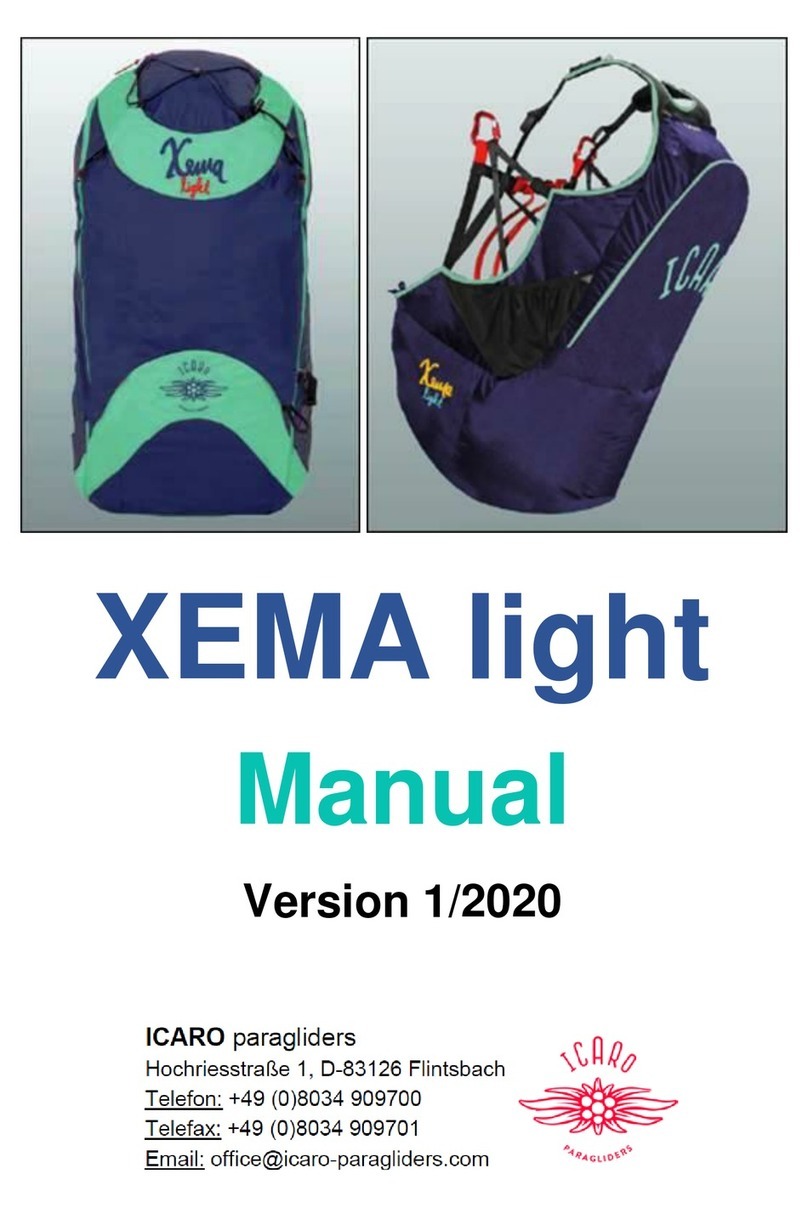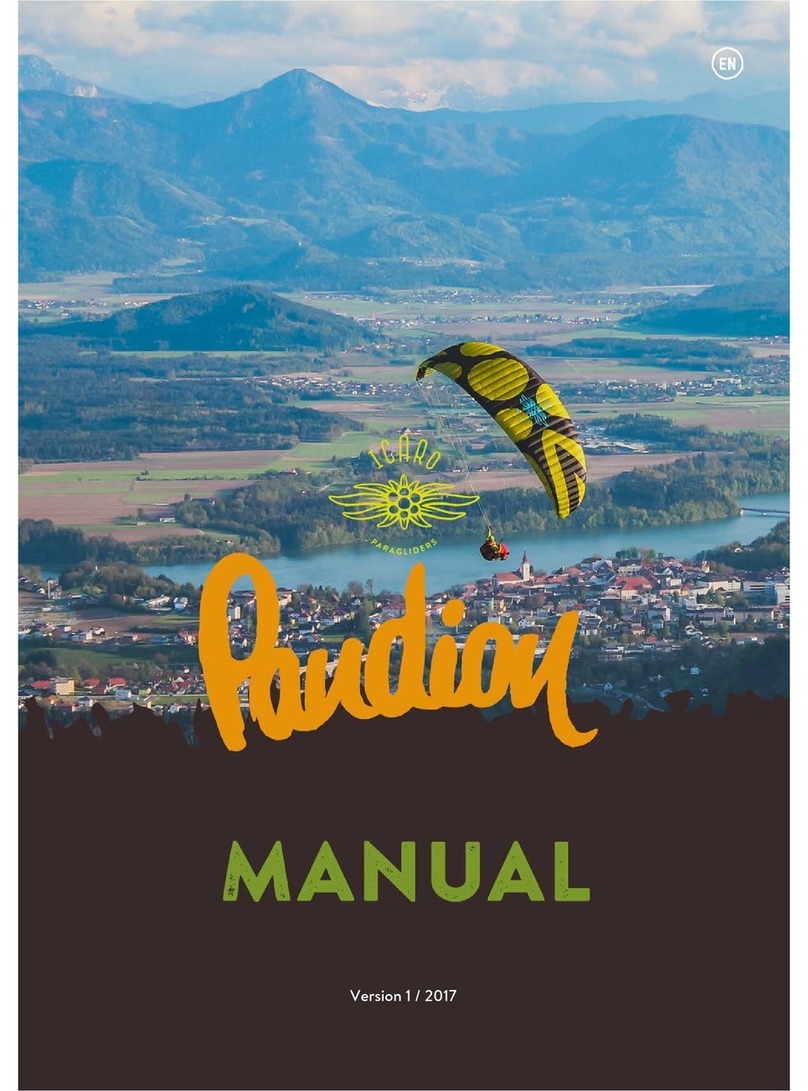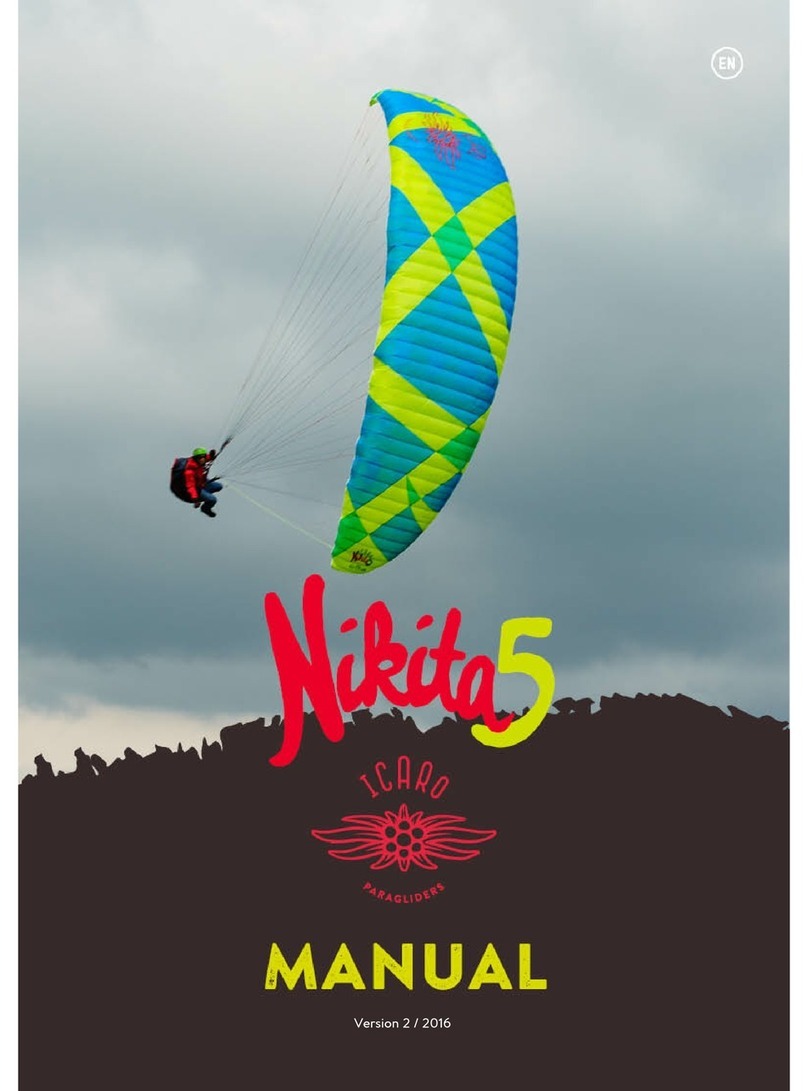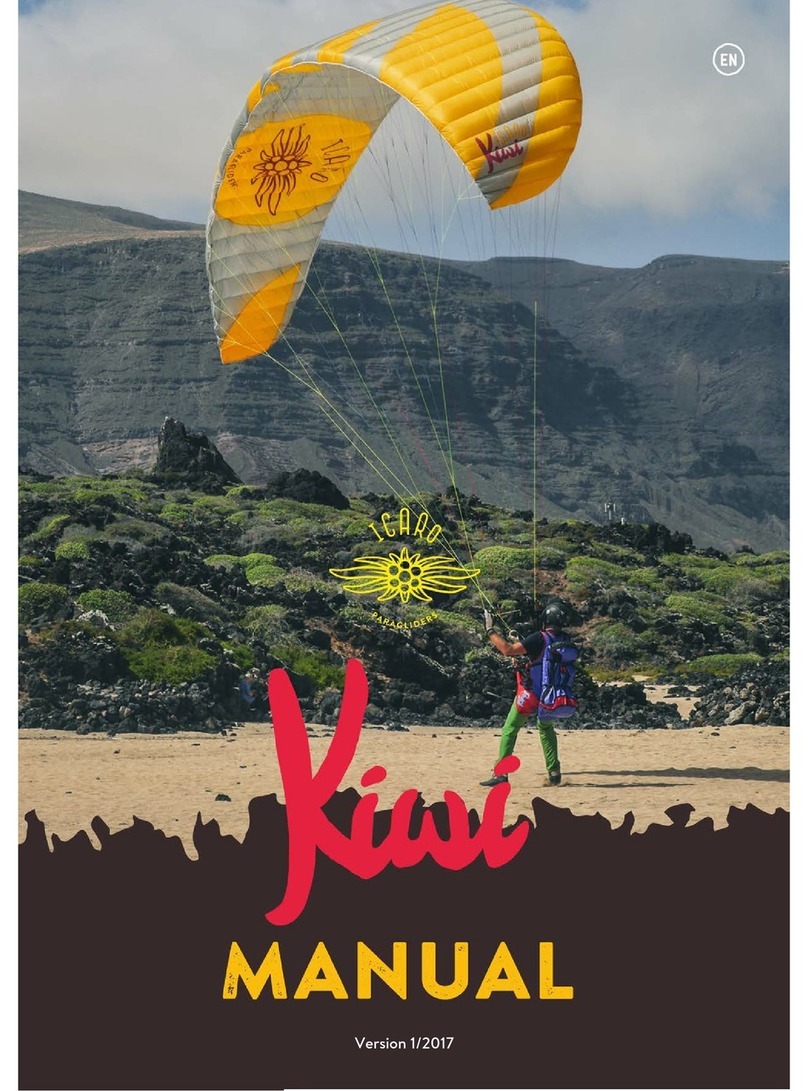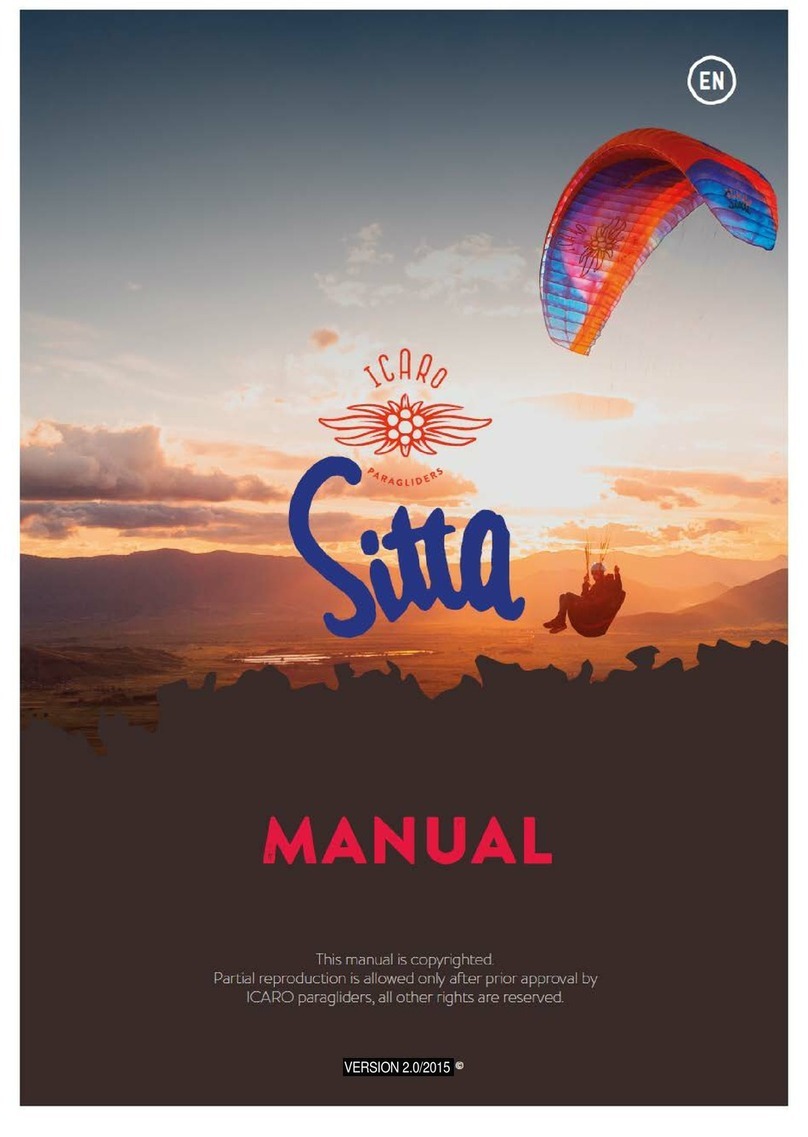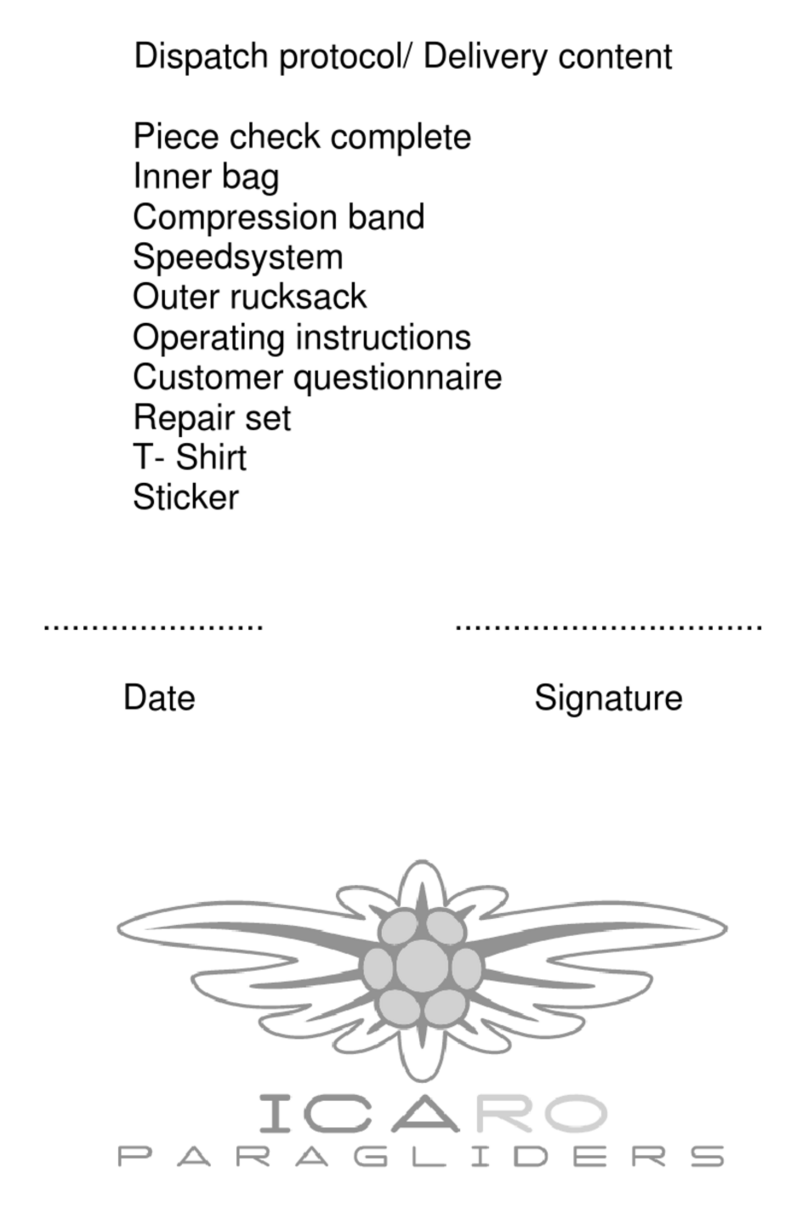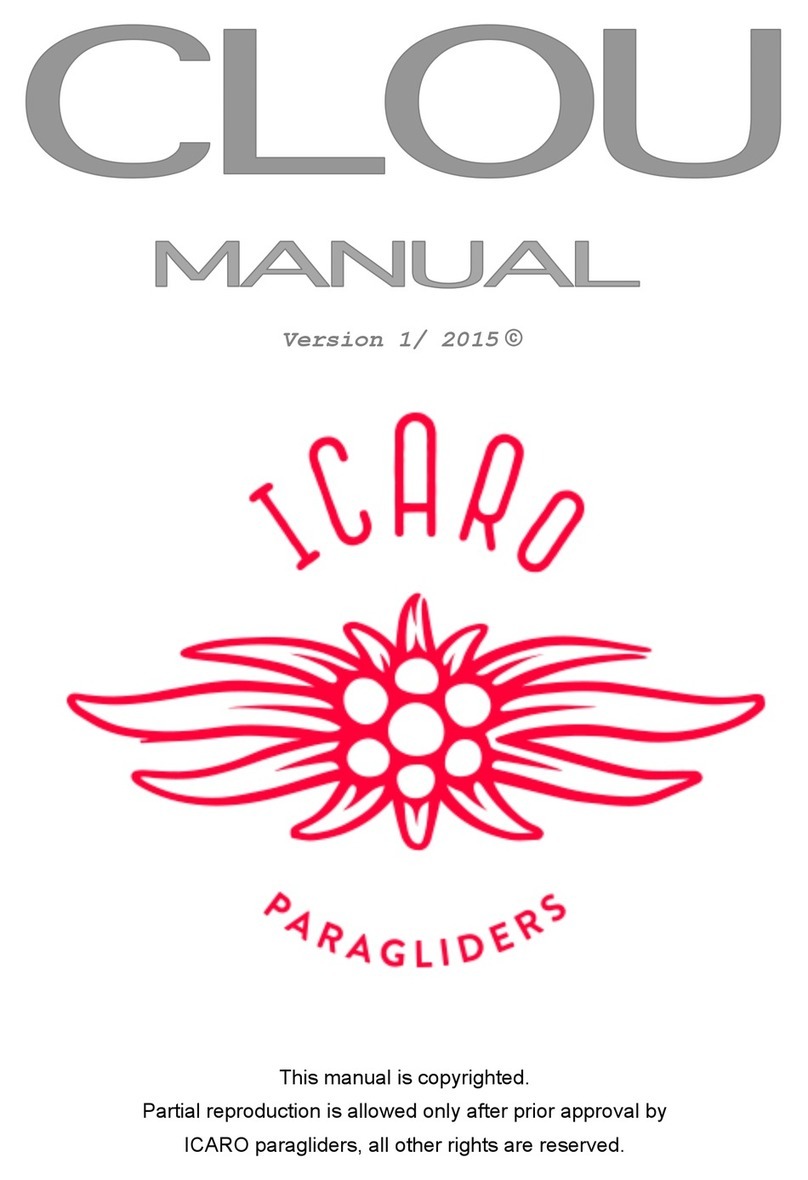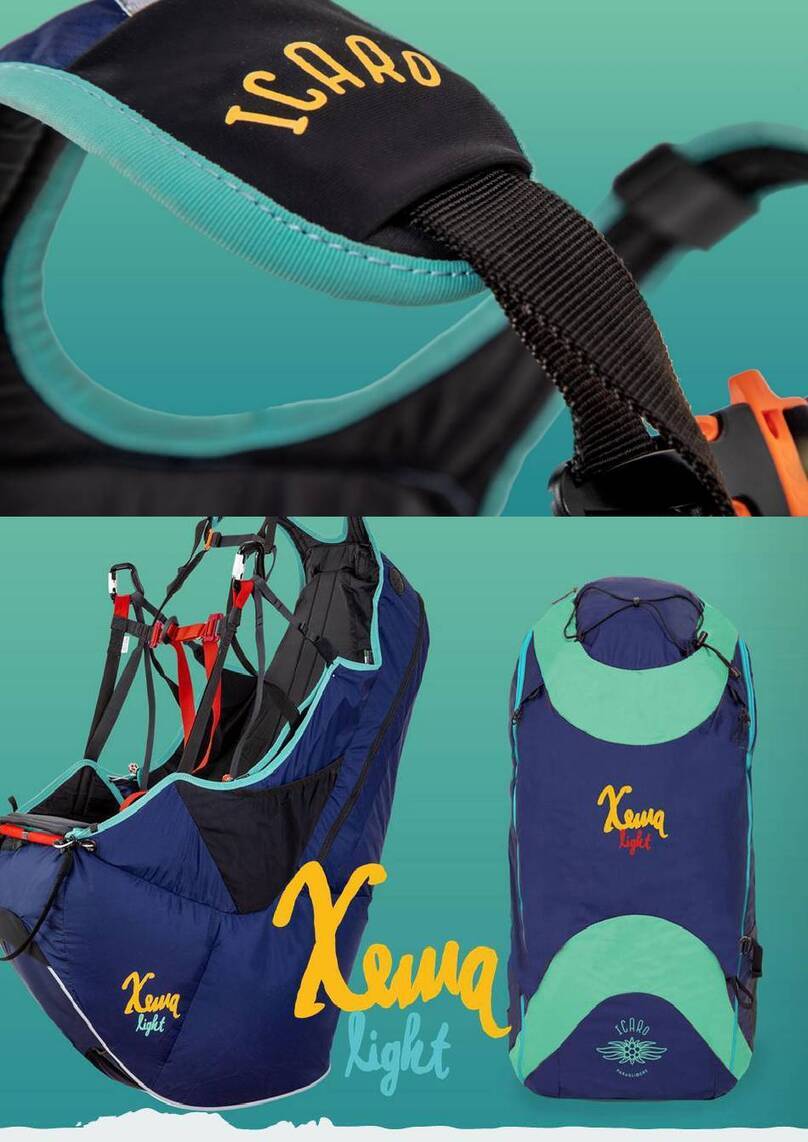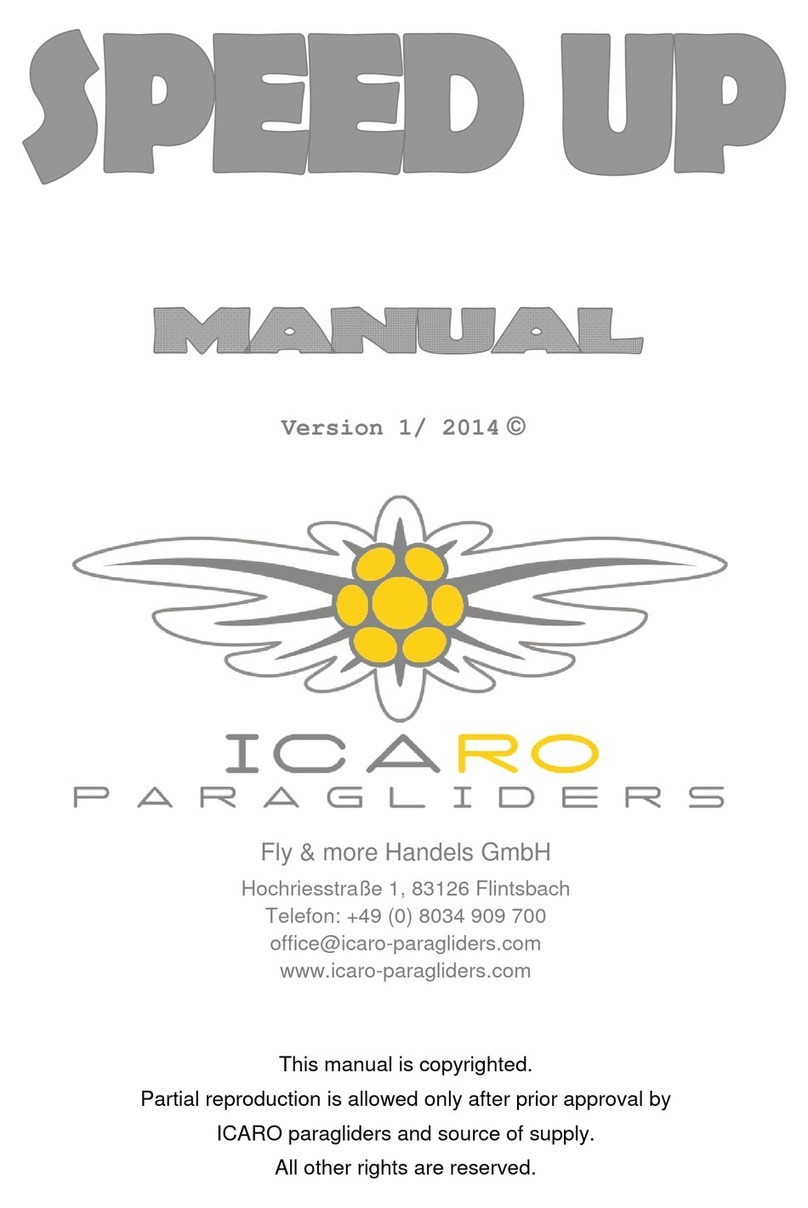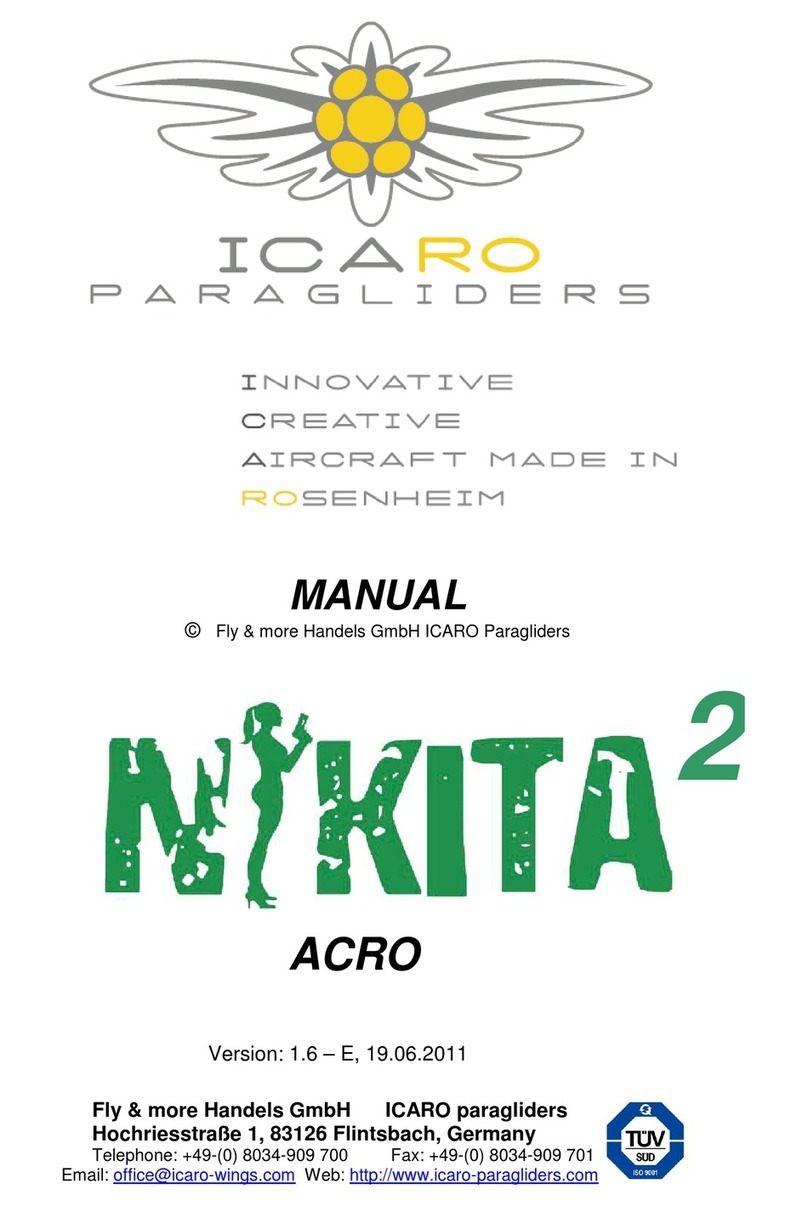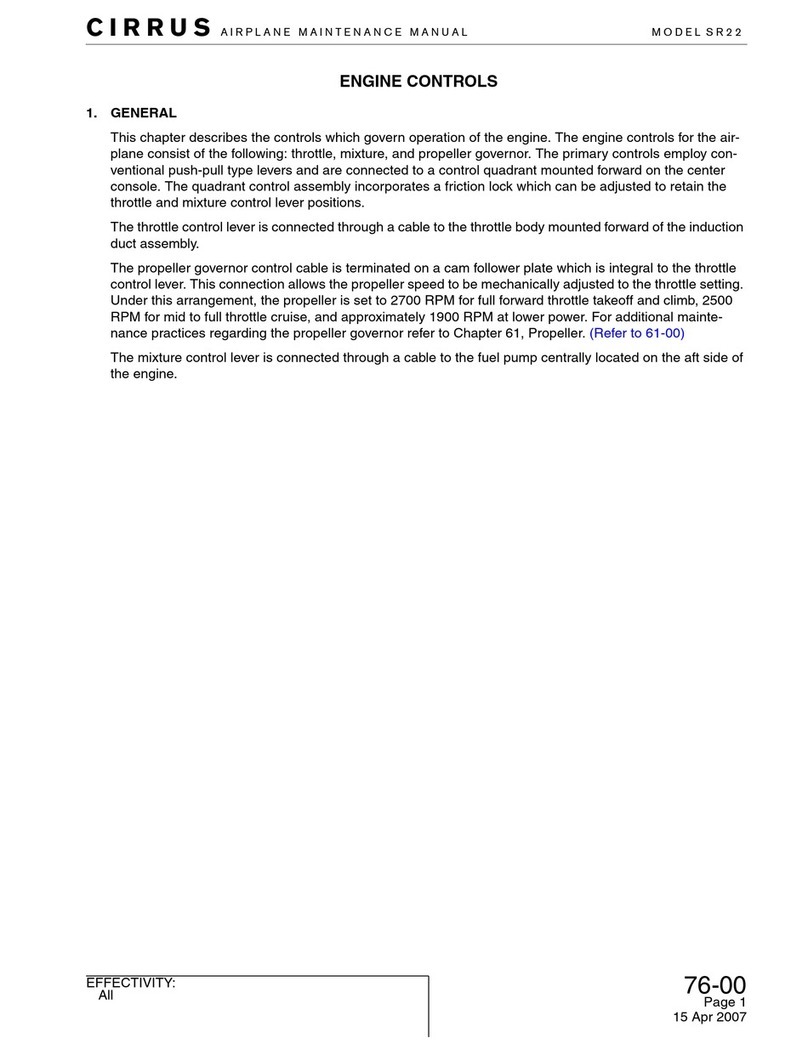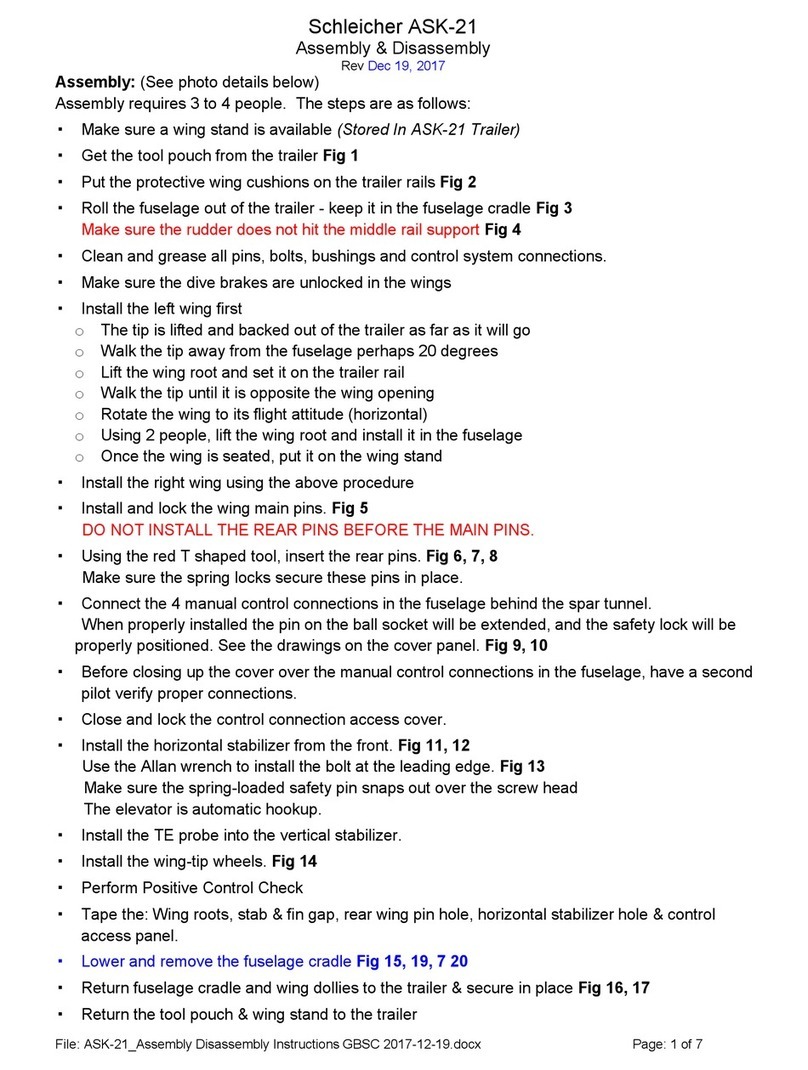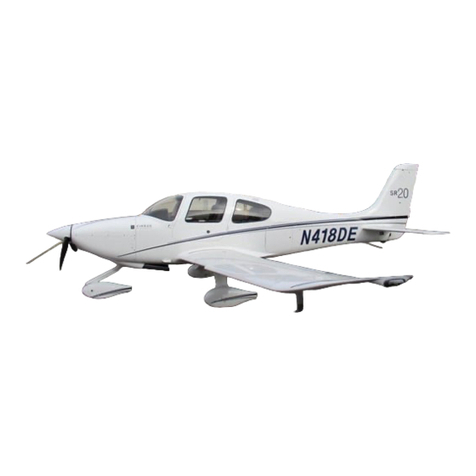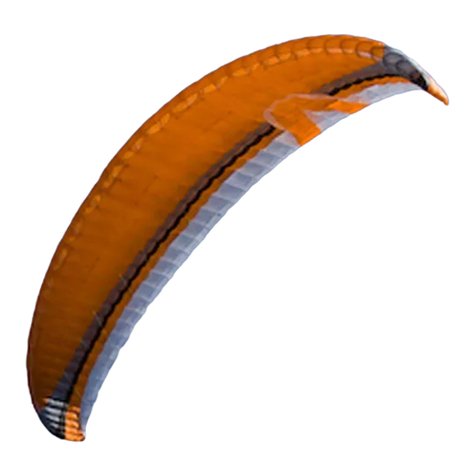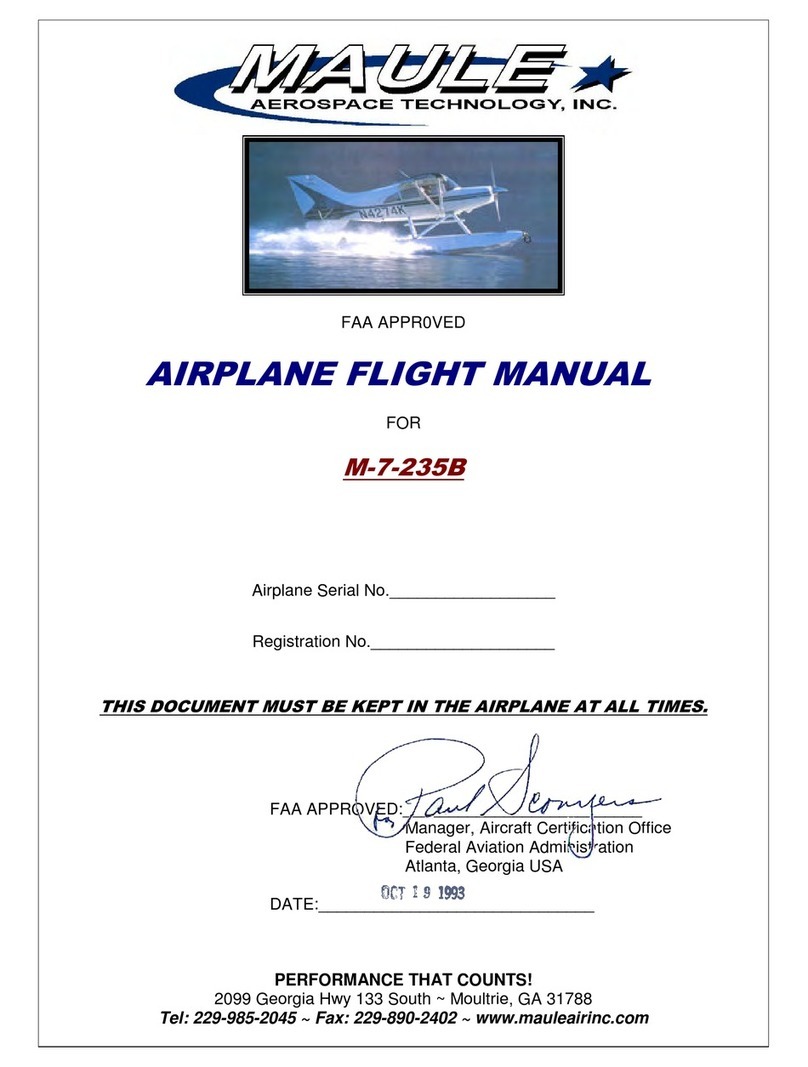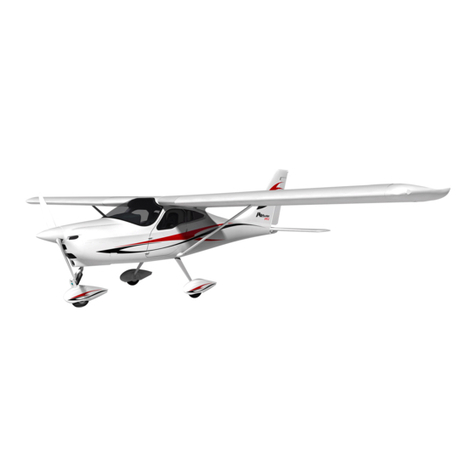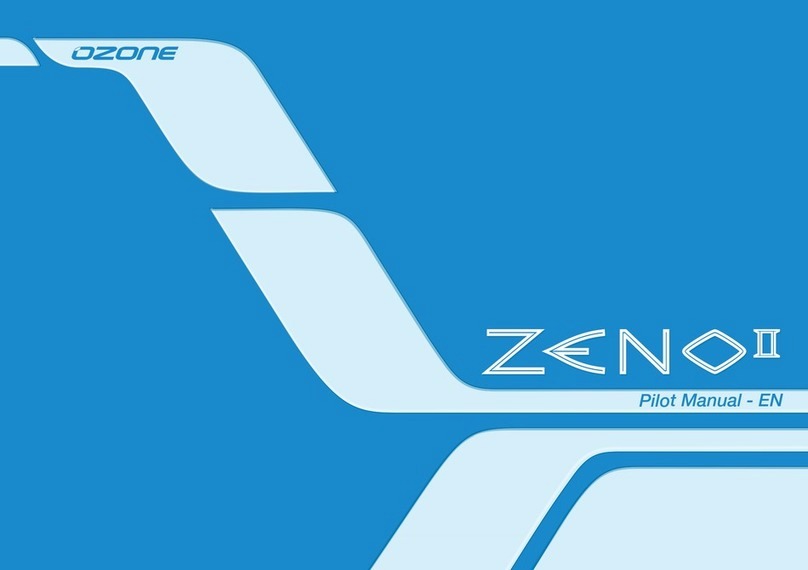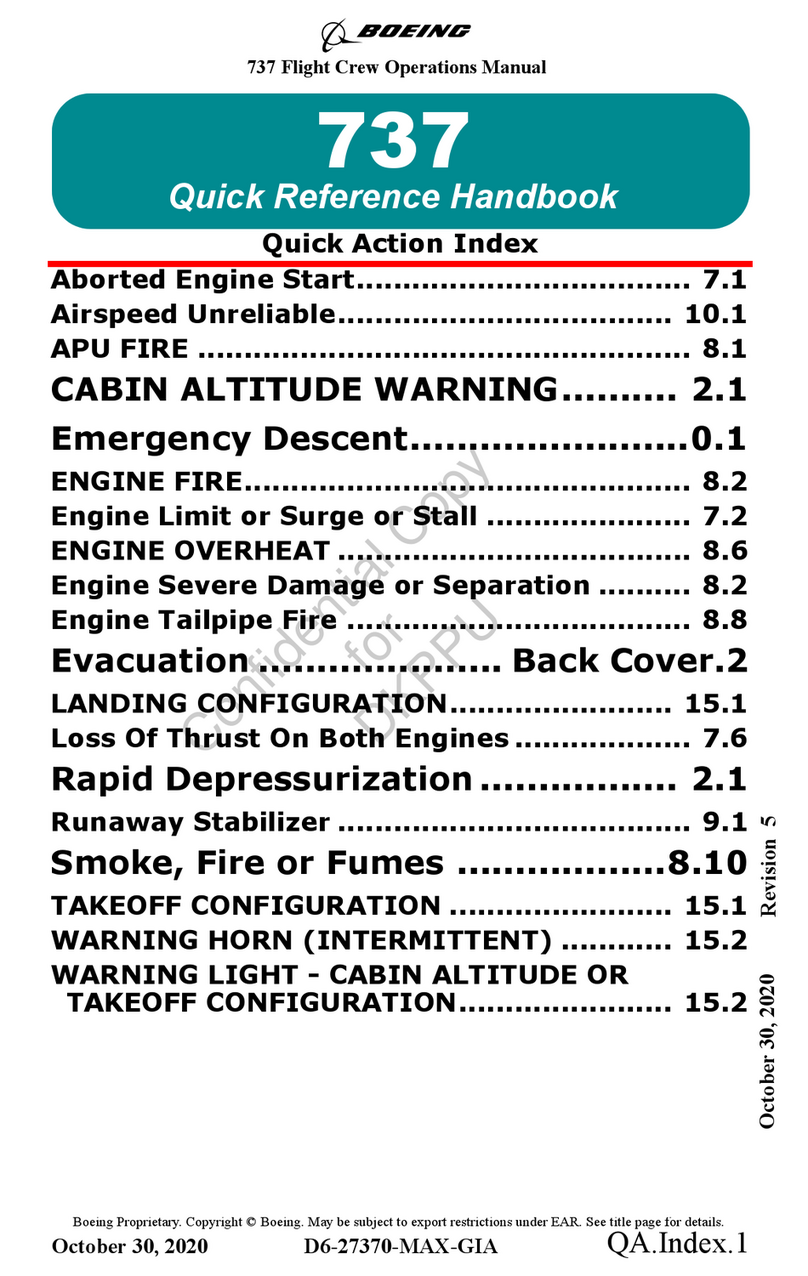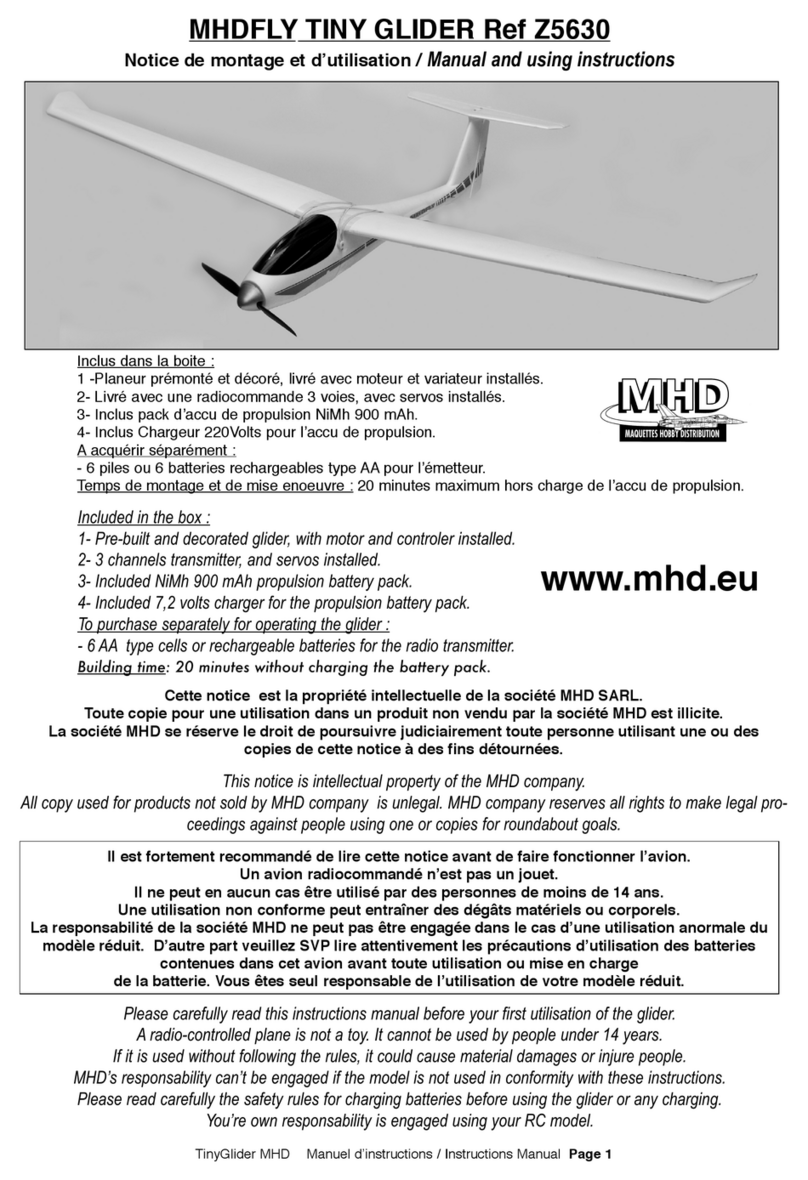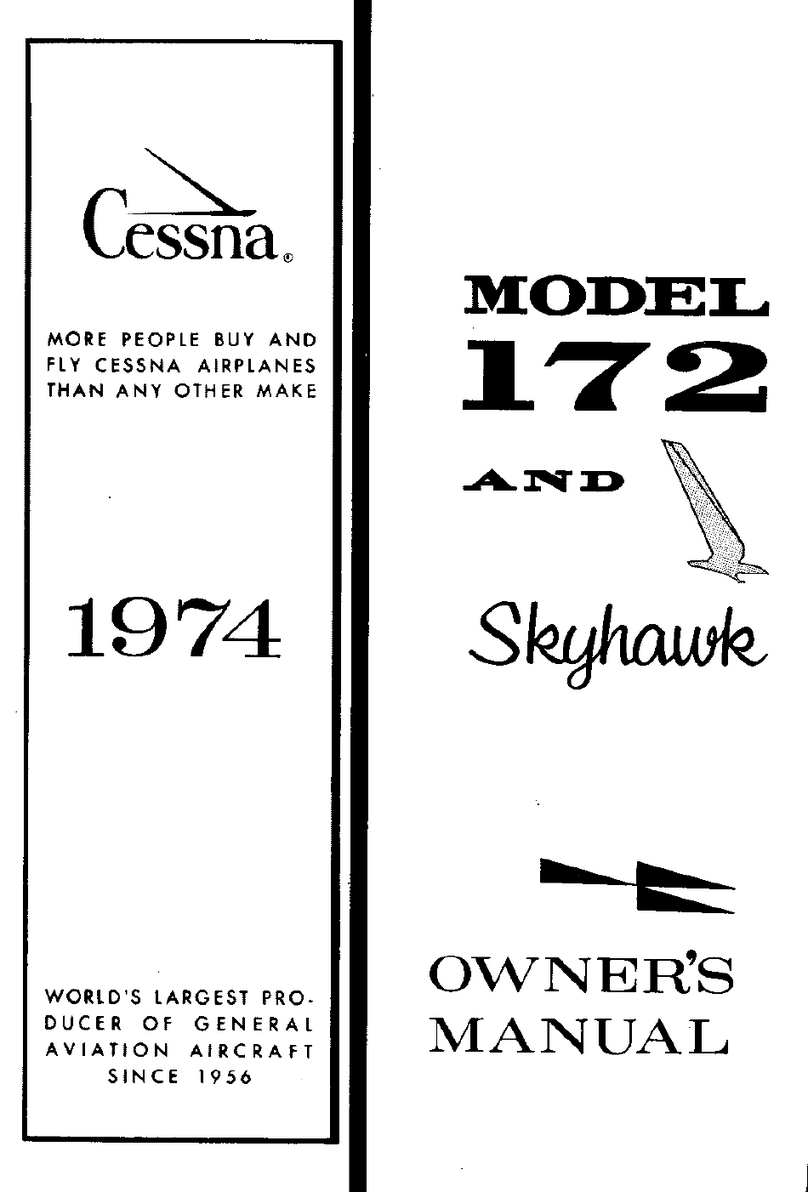Page 8
the chest strap increases stability but also the risk of twists following glider
collapse, and it also increases the frequency of getting collapses due to poor
feedback from the glider.
Flight preparation
•Whilst unfolding your paraglider check the canopy and cell walls for damage.
Always take into consideration that the paraglider may have become damaged
during transportation.
•Check the lines for knots, twisting and damage, the brake lines for knots, kinks
and their symmetric. Loose or incorrect brake knots can cause serious
accidents through loss of the steering of the glider!
•Separate the line groups carefully and bring the risers in order. All lines must
run freely from harness to canopy. It is equally important that the lines are
unhindered and cannot get caught up during the launch.
•Check the rescue system (handle’s pins fixed in the loops and the closed cover
of your harness).
•Please ensure that both you and your passenger are wearing gear which offers
both optimal comfort and protection (helmet with chin protection, boots, gloves
and an overall).
•At last connect the karabiners of the harnesses and the risers to the spreader.
The choice of the optimal hook up point is dependent on the type of harness
used and also the weight and body size of both the pilot and passenger. In
order to find the optimal hook up points, we recommend that you try out
different situations in a simulator.
•Check that all karabiners are closed and cannot be opened accidentally in flight
that the risers are not twisted and the position of the trimmer on both risers.
Launch
The most important thing during the take-off is, like at all other gliders too, not the
force but the constancy of the pull.
Hold only the middle A risers and the handles of the brakes, after you have
finished the obligatory preflight check. When you pull on the A-risers, the lines in
the middle of the wing should be under tension before the lines on the wing ends.
This ensures an even easier start. Use progressive pressure on the A risers and
the energy of our own bodies weight until the wing is fully inflated overhead. The
canopy is inflated quickly due to the super short lines. When there is no pull from
the lines and the wing is overhead, use slight pressure on the brake. Look up and
make sure that the canopy is fully inflated. After a few accelerating steps and at
the same time let go of the brakes gently, you will take off with your passenger.
Then use slight pressure again on the brakes to fly at a speed with minimal sink.
The completely opened trimmer must not be used in extreme, not flyable
strong wind to force a start.
Active flying
The TWICE TE has an extremely high stability. We advise you to apply the brakes
at all times whilst flying in turbulences. You hereby increase the opening angle and
the wing is more stable. At the same time the pilot has a better feeling for the
canopy via the brakes. When flying into strong thermals please pay attention that
the canopy does not remain behind the pilot. This is avoided by releasing the
